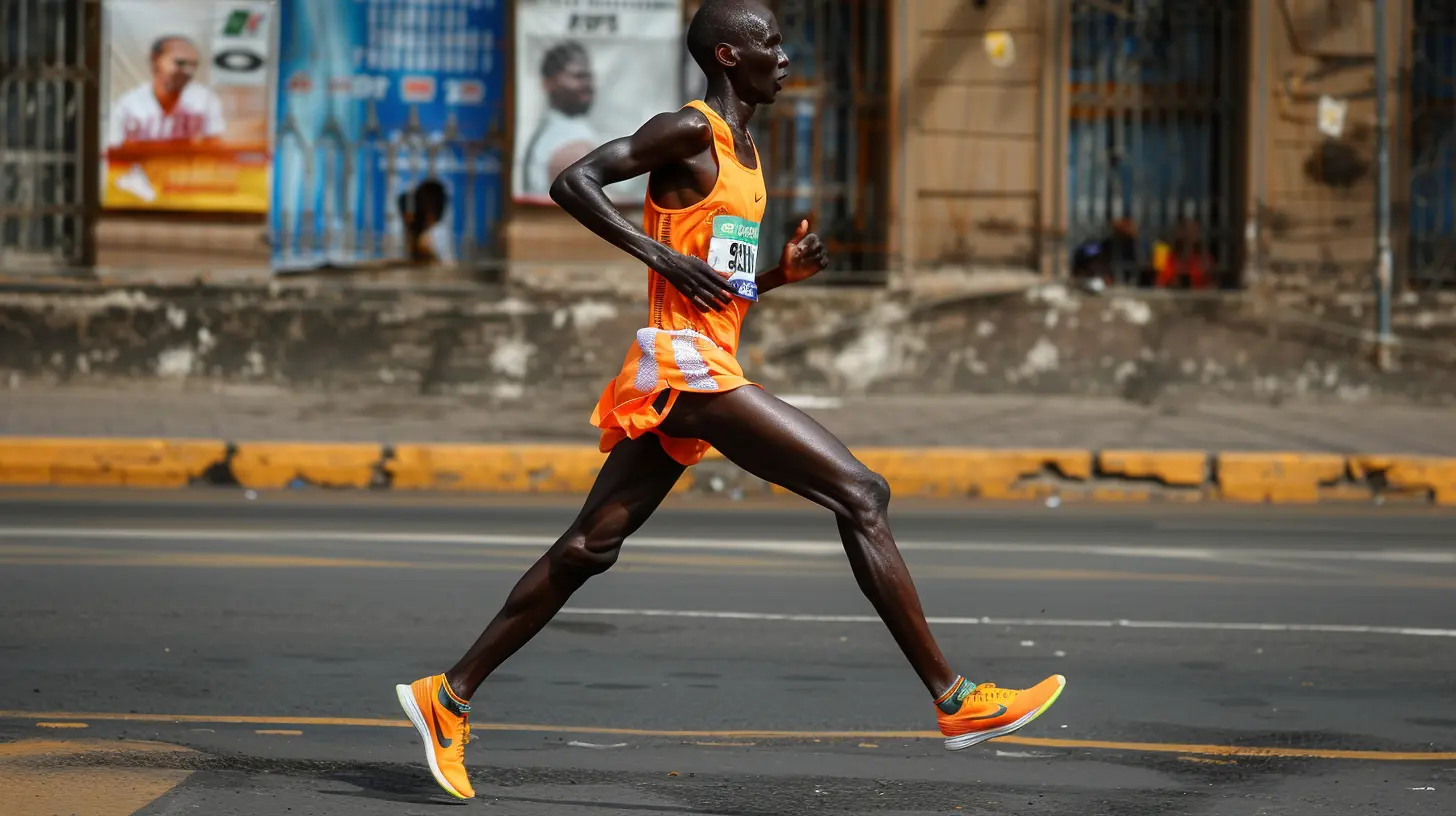Top Mistakes Marathon Runners Should Avoid
19 November 2025
Running a marathon is no joke. Whether it's your first 26.2 miles or your tenth, the journey to the finish line is filled with lessons, sweat, and occasional regrets. And let’s be honest, there’s nothing worse than crossing that finish line thinking, “Man, I could’ve done that so much better.”
So if you’re lacing up for your next marathon and want to sidestep the landmines that trap even seasoned runners, you’re in the right place. Let’s talk about the top mistakes marathon runners should avoid—so you can run smarter, faster, and injury-free.
1. Skipping the Training Plan
Let’s start with the obvious one. You cannot wing a marathon. No matter how athletic you are, running 26.2 miles without a proper plan is like going scuba diving with half a tank of air. You’ll regret it—painfully.If you think you can just "go for runs" whenever you feel like it, you're setting yourself up for burnout, injury, or a miserable race day. A proper marathon training plan gradually builds your endurance, improves your pace, and gives your body time to adapt.
❗ Pro Tip: Choose a training plan that matches your fitness level. Beginner? Go for a 16- to 20-week plan that allows for slow, steady progress.
2. Ignoring Rest and Recovery
Here’s the deal—rest days aren't lazy days; they're essential. Your muscles don't build strength while you're running; they grow during recovery. Think of rest like recharging your battery. Would you keep using your phone if it’s at 2%? Probably not.Overtraining can lead to fatigue, injury, and even mental burnout. And if you’re always tired, you can’t run well. Simple as that.
🛌 Listen to Your Body: If your legs feel like lead or you’re constantly tired, rest. A skipped run is better than a sidelined season.
3. Not Practicing Long Runs Properly
The long run is the crown jewel of marathon training. It teaches your body to deal with fatigue and helps you fine-tune your fueling strategy. Skip these, and you might as well be running blindfolded on race day.Many runners make the mistake of either avoiding long runs or doing them too fast. Remember, long runs are about building endurance, not setting speed records.
🥶 Bottom Line: Pace yourself on long runs. Go too hard, and you’ll be toast before you even get to taper week.
4. Trying Something New on Race Day
New shoes? Race-day debut. Never tried gels before? Let’s throw those in too. Spoiler alert: Race day is not the time for experiments.Your stomach, feet, and legs like familiarity. Any sudden change—be it gear, food, or hydration—can backfire. Ever had stomach cramps at mile 18? It’s not fun. Trust me.
👟 Golden Rule: Train with what you'll race with. That includes shoes, socks, clothes, fuel, and even your breakfast.
5. Poor Fueling and Hydration Strategy
Running a marathon is like driving a car cross-country. You wouldn’t skip gas stations, right? Similarly, your body needs fuel and water to go the distance.Some runners either overhydrate (hello, hyponatremia) or under-hydrate (hello, cramping). And don’t get me started on those who skip mid-run snacks altogether.
🍌 Tip: Start fueling early and consistently. Practice taking gels or chews every 30–45 minutes. And drink before you’re thirsty.
6. Underestimating the Taper Period
The taper is when you reduce mileage in the last 2–3 weeks before race day to let your body recover and store up energy. But a lot of runners panic and think tapering will ruin their fitness. So, they sneak in "just one more long run."Big mistake.
😬 Truth Bomb: You won’t lose fitness in a few weeks, but you can sabotage your race by training too hard too close to it. Trust the process.
7. Ignoring Strength Training
Running is great, but it only targets specific muscles. If your glutes, hamstrings, or core are weak, you'll compensate elsewhere—and boom, injury.Building strength helps you run more efficiently, maintain good form, and stay injury-free. Plus, it gives you that extra push in the final miles when everything’s begging you to stop.
💪 Quick Fix: Add 2–3 strength sessions a week. Focus on legs, core, and posterior chain (that’s science-talk for the back of your body).
8. Wearing the Wrong Shoes
Your shoes literally carry you for thousands of steps. Yet, most runners just grab a random pair off the shelf or go with whatever’s trending.The result? Blisters, black toenails, shin splints, or worse—chronic injuries.
👟 Game Plan: Get fitted at a running store. Know your gait. Know your arch. And break those babies in well before race day.
9. Neglecting Mental Preparation
Marathon running is as much a mental challenge as it is physical. At some point—maybe mile 20, maybe mile 10—you’re going to want to quit. And if you haven’t trained your brain, you just might.Visualization, mantras, and positive self-talk can keep your mind strong when your body starts to quit.
🧠 Mind Over Matter: Train your mental game like you train your legs. A strong mind carries tired legs to the finish line.
10. Starting Too Fast
Ah, the adrenaline rush at the starting line. The crowd, the music, the excitement—it’s all very intoxicating. So, you start too fast, thinking you’re a superhero.Newsflash: Marathons are not sprints. Blow your energy in the first hour, and you’ll be crawling the last six miles.
🏃♂️ Strategy: Stick to your pace. Use a GPS watch or pace band. Let others zoom past; you’ll catch them at mile 22 when they hit the wall.
11. Ignoring Weather Conditions
Weather can make or break your race. Too hot? You’ll overheat. Too cold? You might cramp or lose energy early on. If you’re not prepared, your performance takes a hit.☁️ Pro Tip: Always check the forecast. Adjust your gear and hydration accordingly. Layer up or down, and protect yourself from the sun, rain, or wind.
12. Failing to Practice Race Logistics
You’ve trained for months—don’t let logistics ruin your day. Things like not knowing where to park, what time to arrive, or where the bathrooms are can create unnecessary stress.Plus, some runners forget essentials like bibs, gels, or even socks (yes, it happens).
📝 Checklist: Lay out your gear the night before. Know the race route. Know the start time. Don’t wing it.
13. Not Respecting the Distance
This one’s big. A lot of runners, especially those with several races under their belts, get too comfortable. They stop respecting the grueling nature of 26.2 miles.Marathons don’t care if you’ve run ten of them—you still need to prepare.
💯 Final Word: Humility goes a long way. Treat every marathon like a challenge, and you’ll finish stronger.
Final Thoughts
Running a marathon is one of the most rewarding challenges you'll ever take on. But it’s a long journey filled with pitfalls if you’re not careful. The good news? These mistakes are totally avoidable.Train smart. Fuel right. Rest often. And above all—respect the distance.
So next time you hit the pavement, carry these lessons with you. Your future, less-sore, more-smiling, medal-wearing self will thank you.
all images in this post were generated using AI tools
Category:
MarathonAuthor:

Uziel Franco

